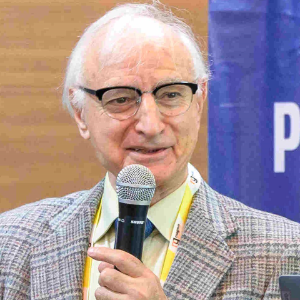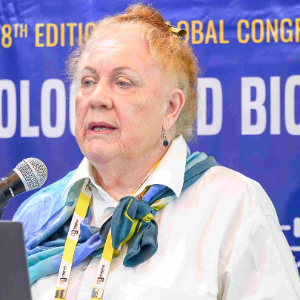Plant Aerenchyma
Large, interconnecting air gaps are anatomically known as aerenchyma and are present in the stem, root, and leaf of plants. It is a specialised tissue that makes it easier for gases and liquids to move around inside of plants. The breakdown of intercellular gaps inside plant tissue and the presence of air spaces that are related to one another result in the formation of aerenchyma. Providing an effective channel for oxygen diffusion for photosynthesis, respiration, and the transport of carbohydrates and other chemicals, it is an adaptation to the low oxygen concentrations in the soil. A plant's weight can be reduced via the development of aerenchyma, enabling it to float on water. Aerenchyma can aid in the healing of damaged tissue and lessen tissue damage brought on by waterlogging. Additionally, it is involved in the storage of metabolites such as sugars that aid plants in surviving adverse conditions.

Mohammad Babadoost
University of Illinois, United States
Mary Cole
The University of Melbourne, Australia
Valasia Iakovoglou
UNESCO chair Con-E-Ect, International Hellenic University, Greece
Satya S S Narina
Virginia State University, United States
Sara Hailemariam
Purdue University, United States
Midhat Mahboob
Lincoln University, New Zealand


Title : Exploring the genetic diversity in tannin-rich forages to explain the large intra species variability in tannin content
Selina Sterup Moore, Aarhus University, Denmark
Title : Isolation and functional properties of biomolecules of plants and its application
Balagopalan Unni, GEMS Arts & Science College (Autonomous), India
Title : Primed for the future: PGPR and the promise of sustainable, heritable crop resilience
Prashant Singh, Banaras Hindu University (BHU), India
Title : Revealing allelic variations in candidate genes associated with grain yield under salinity stress between two contrasting rice genotypes
Nisha Sulari Kottearachchi, Wayamba University of Sri Lanka, Sri Lanka
Title : Adaptive strategies of Aristida L. species across ecological zones of Pakistan: Linking soil characteristics with morphological and physiological traits
Iram Ijaz, University of Agriculture Faisalabad Pakistan, Pakistan
Title : Ethnobotanical survey and abundance of weeds in selected Manihot esculenta (cassava) Crantz farms in Osun state, Nigeria
Dada Caleb Mayokun, University of Ibadan, Nigeria